The community at Kiskiak surrounded Indian Field Creek and stretched onto the bluffs overlooking the broad mouth of the creek. These bluffs are part of a geologic formation called the Yorktown Formation, which was underwater millions of years ago. Some of the animals that lived during this time became fossilized, including a megalodon. Like its name suggests, it was a huge shark that lived between 26 million and 3 million years ago.
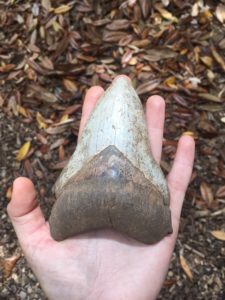
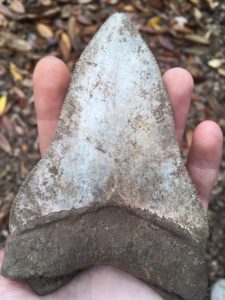
A megalodon tooth
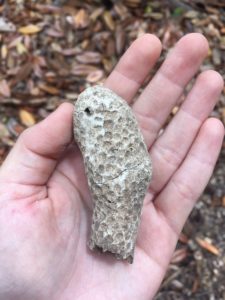
A piece of fossilized coral
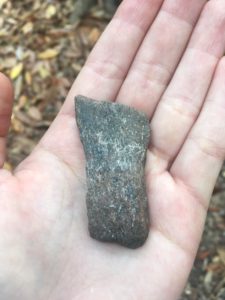
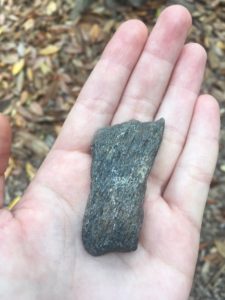
The front and back of a fossilized whale bone; bone is usually identified by the small, regular grooves seen in the last photo.
During the Middle Woodland period, approximately 500 BCE to 900 CE, people foraged and fished for most of their food. The oysters that grew at Indian Field Creek were either subtidal or intertidal, meaning that they grew either completely submerged in water or only sometimes submerged in water. We can tell where an oyster grew by looking at its shell, even if the shell has been buried underground for hundreds of years. We can also learn many things about the health of the creek and the species that lived there by looking at oyster shells. For example, oyster shell sizes change over time, reflecting the health of the overall population. Some shells also show evidence of small parasites that attached themselves to the oysters, which allows us to see how different species interacted in the past.
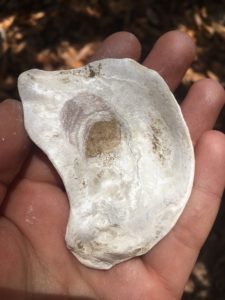
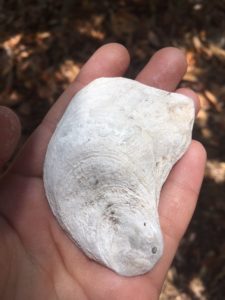
One valve of a bivalve oyster shell
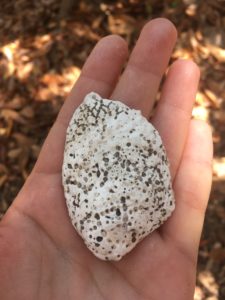
This shell shows evidence of a marine parasite, as indicated by the small holes.